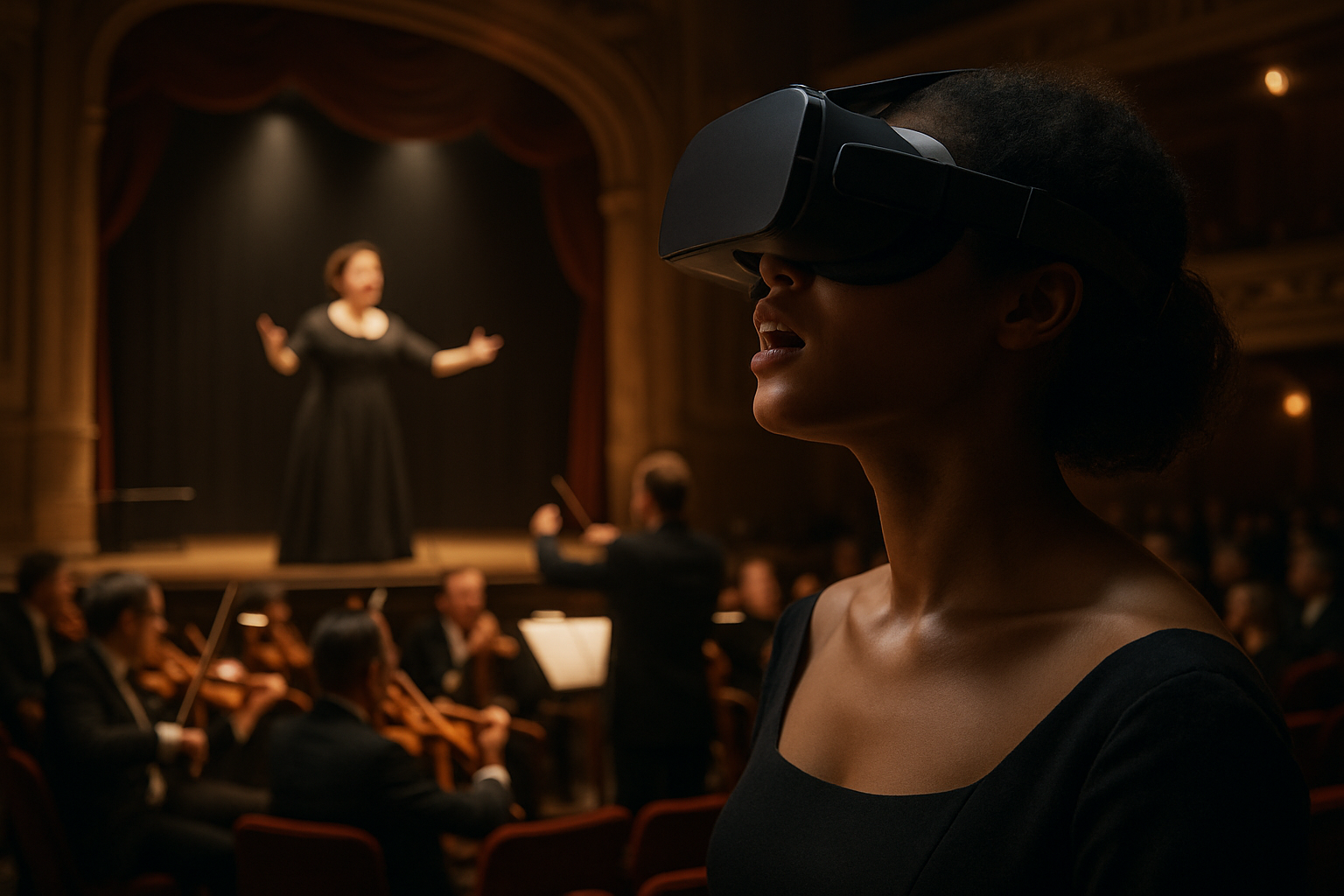The Enigmatic World of Holographic Opera
In the ever-evolving landscape of performing arts, a revolutionary fusion of technology and classical tradition is captivating audiences worldwide. Holographic opera, a cutting-edge blend of centuries-old musical storytelling and state-of-the-art visual effects, is redefining the boundaries of theatrical performance. This groundbreaking art form marries the timeless beauty of operatic voices with the limitless possibilities of holographic projections, creating an immersive experience that transports viewers into fantastical realms. As opera houses and tech companies collaborate to push the envelope of artistic expression, holographic opera stands poised to usher in a new era of musical innovation.

Technological Marvels Behind the Curtain
At the heart of holographic opera lies a complex array of cutting-edge technologies. High-powered laser projectors, advanced motion capture systems, and specially designed holographic screens come together to create the illusion of three-dimensional performers sharing the stage with live singers. Real-time rendering engines, originally developed for video games, allow for dynamic and responsive holographic elements that can interact with the physical set and performers.
Reimagining Classical Repertoire
Holographic opera has breathed new life into beloved classics. Productions of Wagner’s Ring Cycle have utilized holograms to bring mythical creatures and magical effects to life with unprecedented realism. Mozart’s The Magic Flute has been transformed into a technicolor wonderland, with holographic spirits and enchanted forests surrounding the singers. These innovative adaptations have attracted new audiences to opera houses, bridging the gap between traditional art forms and modern entertainment.
Creating New Worlds and Narratives
Beyond reimagining existing works, holographic opera has opened doors for entirely new compositions and stories. Composers and librettists are now crafting operas specifically designed to take advantage of holographic technology. These new works explore themes of virtual reality, artificial intelligence, and the nature of perception itself. One notable example is The Singularity, a groundbreaking opera that portrays a future where humans and AI merge, utilizing holograms to blur the line between flesh-and-blood performers and digital entities.
Challenges and Controversies
As with any revolutionary art form, holographic opera has faced its share of challenges and criticism. Purists argue that the technology detracts from the raw power of the human voice and the intimacy of live performance. Technical glitches during early productions led to skepticism about the reliability of the medium. Additionally, the high cost of implementing holographic systems has limited its adoption to only the most well-funded opera houses, raising concerns about accessibility and elitism in the art world.
The Future of Holographic Opera
Despite these hurdles, the future of holographic opera looks bright. Ongoing advancements in projection technology and artificial intelligence promise even more seamless integration of digital and physical elements. Some visionaries in the field speculate about fully immersive holographic environments that surround the audience, or interactive operas where viewers can influence the narrative through gestures or voice commands.
Global Impact and Cultural Exchange
Holographic opera has also become a powerful tool for cultural exchange and preservation. Performances of rare or culturally significant operas can now be digitally captured and reproduced with stunning fidelity in venues across the globe. This has allowed audiences in remote areas to experience world-class productions that were previously inaccessible. Moreover, holographic technology has enabled collaborations between artists separated by vast distances, fostering a new era of international creative partnerships.
Educational Potential
The educational potential of holographic opera is vast and largely untapped. Music schools and conservatories are beginning to incorporate this technology into their curricula, training the next generation of performers and composers to work with holographic elements. Interactive holographic displays in museums and cultural centers offer visitors immersive experiences of operatic history and technique, making this sometimes-intimidating art form more approachable to the general public.
Ethical Considerations in Digital Performance
As holographic opera continues to evolve, it raises intriguing ethical questions about the nature of performance and authorship. The ability to create lifelike digital reproductions of singers, including those who have passed away, has sparked debates about posthumous performances and the rights of artists over their digital likenesses. These discussions are shaping new legal frameworks and industry standards for the use of holographic technology in the performing arts.
A New Renaissance in Musical Theater
Holographic opera represents more than just a technological gimmick; it is ushering in a new renaissance in musical theater. By seamlessly blending the timeless power of the human voice with the limitless possibilities of digital art, this innovative medium is attracting diverse audiences and inspiring a new generation of artists. As technology continues to advance and creative boundaries are pushed, holographic opera stands at the forefront of a thrilling new chapter in the history of performing arts, promising experiences that will continue to awe, inspire, and transform.





